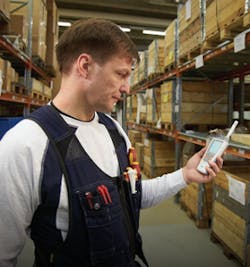Over the past decade, it has become more common to validate humidity as well as temperature in controlled environments in order to meet GxP requirements. Typically we use the same methods for humidity mapping as for temperature, however, there are a few special considerations for mapping humidity: calibration and sensor density/placement.
There are five key considerations for determining sensor placement in a mapping study. While every combination of environment and product specifications is unique, these rules are applicable to almost every situation.
Rule 1: Map the extremes.
Rule 2: Map in three dimensions.
Rule 3: For large spaces, map storage only.
Rule 4: Identify and address variables.
Rule 5: If it’s worth mapping, it’s worth monitoring.
Many facilities lack the equipment to perform a pre-or post-study calibration because this would require a well-equipped calibration lab. Generally we simply verify that calibration certificates are available for the humidity sensors, and that each sensor was within its calibration interval at the time of use.
SECOND: SENSOR DENSITY AND PLACEMENT...
The simplest practice is to use the same number of humidity and temperature sensors. This is especially easy if you are using dual temp/RH sensors; however, in some mapping applications, it makes sense to utilize fewer humidity sensors, especially when validating a large area, where humidity is not a problematic condition. If fewer humidity sensors are used, it is important to understand humidity measurement well enough to explain to an auditor what the expected humidity values would be (based on temperature) in the spots that had only temperature sensors.
When deciding the number of sensors, a minimum of 10 sensors per 2 cubic meters of volume is a good rule of thumb.
When deciding the number of sensors, the number one comes up with should depend on the size and logistics of the space. A good rule of thumb is a minimum 10 sensors for a space up to 2 cubic meters of volume, and 16 sensors for a space up to 20 cubic meters. Larger spaces require a geometric arrangement of sensors on three horizontal planes.THIRD: REVALIDATION...
Finally, we always need to consider revalidation because there is a regulatory expectation of regular revalidation, from yearly to once every three years, depending on the criticality of the products or processes involved. We also revalidate whenever a significant change to the system occurs. Revalidation does not need to be as thorough as the original mapping, but it must provide assurance that the space or unit is operating correctly and maintaining conditions that match our original acceptance criteria.
These days mapping studies are performed with data loggers equipped with more stable sensors that many consider drift free.
But, since mentioning post-study calibration, a word about why this is a standard practice. The traditional sensor used in temperature-only mapping studies was the thermocouple. Unfortunately, thermocouple accuracy tends to drift significantly with handling over time (a.k.a. cold working). The inaccuracy increases as a result of bending or stretching the wires as they are placed for the study. Because of this, thermocouple-based mapping systems are generally checked after a study to verify that they are still accurate, thereby giving confidence that the data collected was also accurate. Thermocouple-based systems usually have multiple thermocouples (up to 36 or more) connected to a single device, so there may be as many as 36 data-streams that are associated with a single serial number or device asset number.These days mapping studies are often performed using data loggers, which are equipped with more stable sensors (thermistors). A data logger will have a single serial number associated with each data stream, making the data easy to collect and analyze. Some validation technicians consider these devices to be so drift-free and reliable that they forego the post-calibration check entirely. Because of these differences, one type of data sheet is not sufficient for the post-calibration check of both data loggers and thermocouples. What is needed are different data collection spaces for the different devices.



